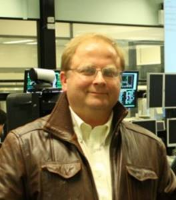Objectives
To see the presentation please click here
Abstract: Nuclear fusion of light elements is the mechanism that powers stars and could become a source of energy on Earth. This talk reviews main approaches and achievements obtained in magnetic confinement fusion machines called tokamaks and stellarators. By considering the ignition criterion applied to magnetic fusion, three main strategic avenues are identified for the developments of magnetic fusion machines: i) large volume machines with long plasma confinement time, ii) machines with high magnetic field, and iii) compact size spherical tokamaks with high values of plasma pressure. Present-day experiments on tokamaks JET, C-MOD, and MAST representing the three avenues above are compared and the next-step burning plasma ITER project is discussed. In preparation for the burning plasma experiment with significant plasma self-heating by fusion-born alpha-particles (He ions with birth energy 3.5 MeV), studies on alpha-particle confinement and Alfvénic instabilities driven by these alpha-particles are currently one of the main topics in magnetic fusion. Numerous observations of discrete Alfvén eigenmodes driven by energetic ions in present-day machines are presented. Main theoretical approaches for investigating Alfvén instabilities are described for both linear threshold estimates and for nonlinear evolution of the instabilities.
 Short Bio: Dr Sergei Sharapov is Principal Research Scientist at Culham Science Center, UK. He has more than 35 years of expertise in theoretical and experimental plasma physics research in multidisciplinary environments, of which more than 23 years at Joint European Torus (JET, UK) and more than 20 years on START and MAST (CCFE, UK). His areas of expertise are acceleration and diagnostics of energetic particles in magnetic plasma devices, energetic particle-driven instabilities, MHD spectroscopy, neoclassical instabilities, nonlinear kinetic theory of wave-particle interaction and nonlinear waves. He is the developer of numerical MHD spectral codes of the MISHKA series with capabilities for studies of Alfvén eigenmodes and MHD instabilities in realistic axisymmetric magnetic field configurations. Dr. Sharapov has authored more than 150 papers in refereed journals, including several invited review papers.
Short Bio: Dr Sergei Sharapov is Principal Research Scientist at Culham Science Center, UK. He has more than 35 years of expertise in theoretical and experimental plasma physics research in multidisciplinary environments, of which more than 23 years at Joint European Torus (JET, UK) and more than 20 years on START and MAST (CCFE, UK). His areas of expertise are acceleration and diagnostics of energetic particles in magnetic plasma devices, energetic particle-driven instabilities, MHD spectroscopy, neoclassical instabilities, nonlinear kinetic theory of wave-particle interaction and nonlinear waves. He is the developer of numerical MHD spectral codes of the MISHKA series with capabilities for studies of Alfvén eigenmodes and MHD instabilities in realistic axisymmetric magnetic field configurations. Dr. Sharapov has authored more than 150 papers in refereed journals, including several invited review papers.
